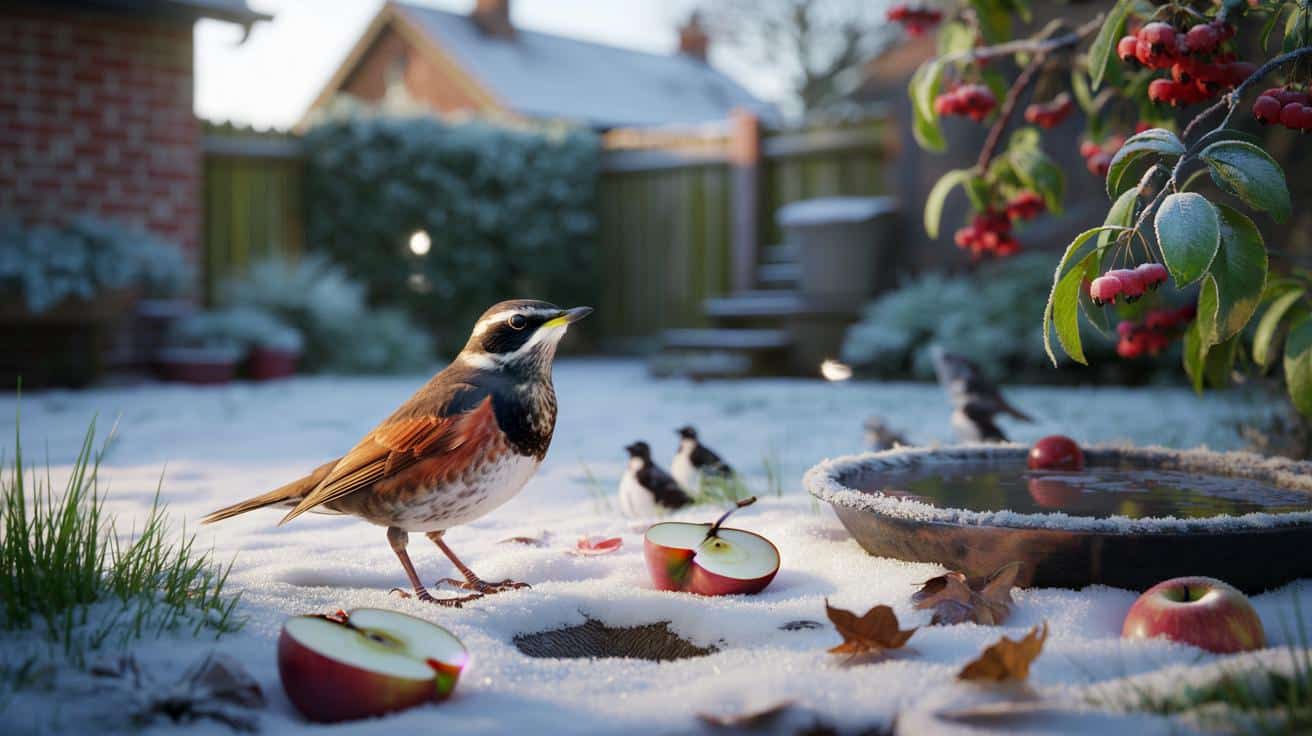Gardeners are urged to look for one elusive bird when the cold bites.
Wintry showers are edging back into the forecast, and with them comes a timely call to action for anyone with a patch of green. When the temperature drops and the ground turns crisp, one small thrush often slips quietly into British gardens in search of food.
It is the redwing, the UK’s smallest true thrush. Usually shy and busy in hedgerows and open fields, it tends to appear in UK gardens only when snow and ice block access to worms and slugs. Spotting one can be the first sign your local wildlife needs a hand.
Snow on the way in the UK, and the one bird that signals trouble
The first flurries of this season spark a simple check many birders swear by. Look low across the lawn, not high on the feeders. Redwings prefer to feed on the ground, especially when fields are locked under frost. And yet they can be surprisingly bold when hunger strikes.
Garden experts Pergolux UK explain « A winter visitor to the UK, Redwings make an appearance in winter time and are the UK’s smallest true thrush. They can be found roaming across the countryside and hedgerows, and very rarely visit gardens unless there’s any snow covering in fields. Keep an eye out for appearances in the garden during the next snowfall.”
That neat flash of creamy eye stripe and warm red underwing is your giveaway. In bitter weather, birds that usually stay out on farmland will hop onto suburban lawns and verges. It feels like a small wildlife moment, but for them it is about calories and survival.
Why redwings turn up in gardens when ice bites
Once snow seals the soil, invertebrates are out of reach. That pushes redwings to swap fields for back gardens, parks and roadside hedges where fallen fruit and berries sit above the frost line. It is a short, urgent window where simple actions matter more than fancy kit.
The Woodland Trust adds « As redwings only visit the UK during the winter, this is the time to be on the lookout for them. These social birds can often be seen in flocks with fieldfares, foraging for food. Having a hawthorn or rowan bush in your garden is a great way of increasing your chances of sighting one, as is leaving apples and mealworms out for them on bird feeders. »
You may see them drop in alongside fieldfares, flicking leaves aside with quick, purposeful movements. On harsh mornings they work through berry-laden shrubs, then drift down to lawns for fruit. A tidy garden offers little at this time of year, while a slightly scruffy corner often does the trick.
Simple winter steps in UK gardens that really help redwings
There is a straightforward way to help that fits into any routine. Redwings relish apples when other food runs short. Slice the fruit and place it on the grass where birds feel secure and can feed quickly between gusts of sleet. They are ground feeders, so low and open beats high and fussy.
- Halve or quarter eating apples and lay the pieces on the lawn for easy access when snow settles.
Keep the spread modest and spaced out to limit squabbles with blackbirds. If you use bird tables, try a few apple slices there as well, since some birds will take advantage of a clear perch. Add a handful of mealworms if you have them, then step back and watch from indoors.
Small details make a difference on freezing days. Refresh water in a shallow dish so it does not glaze over, and dont worry if the lawn looks a bit messy. Leaving some leaves where they fall can shelter invertebrates and keep feeding spots attractive to redwings while the cold holds.
Once the thaw arrives, these winter visitors usually slip back to hedgerows and field margins. Until then, a couple of apples and a watchful eye could be the quiet nudge that sees them through the next cold snap. It is simple, seasonal and genuinely useful when snow returns.









